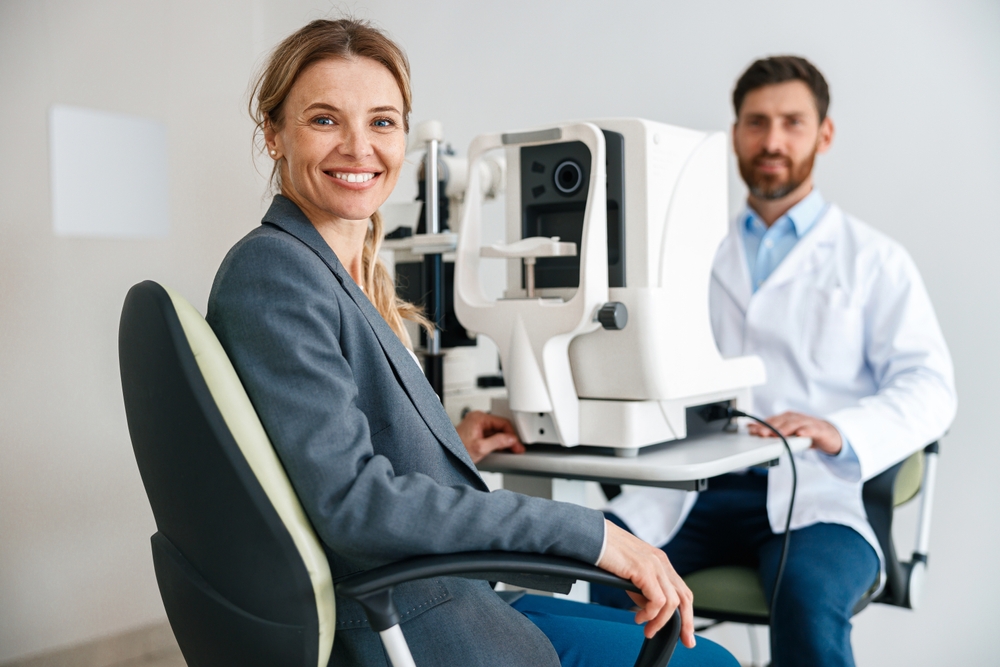
Keratoconus is an eye condition where the cornea (clear, round front part of the eye) gradually thins out and protrudes outward like a cone. The cornea's irregular shape stops the light entering the eye from focusing directly on the retina, distorting vision. If not treated, keratoconus can cause permanent blindness.
An optometrist can diagnose keratoconus during a comprehensive eye exam. An early diagnosis means early treatment and better control of the disease. Keratoconus is not curable, but you can keep it in check effectively with suitable treatment. You can continue to live a normal life with keratoconus.
How Do Optometrists Diagnose Keratoconus?
To check for keratoconus, your optometrist will review your health and family medical history and perform an eye exam. You risk developing the disease if you have a relative or close family member with keratoconus. Reviewing your health history will determine whether you are experiencing keratoconus symptoms.
In the disease's early stages, the telltale signs are mild and may comprise:
- Frequent itchiness that prompts aggressive eye rubbing.
- Blurry vision.
- Vision distortion, straight lines that appear crooked.
- Glare and light sensitivity.
- Eye redness and swelling.
- As the disease worsens, you may experience:
- More vision blurriness and distortion.
- Increased eye soreness and swelling.
- Discomfort wearing contact lenses.
- Increased astigmatism or nearsightedness.
If you display any of these symptoms, your optometrist will perform eye tests to examine your cornea's shape. These tests may include:
Refraction Test
A refraction test uses special tools to check your eyes for eyesight issues. You may need to look at an eye chart through a phoropter. A phoropter is a device that has different types of lenses that determine how well you see.
Your optometrist will ask you to look through the lenses and judge which lens gives you the clearest vision. Through the test, your optometrist will diagnose refractive errors and determine the best treatment or rule them out. Some optometrists may use a retinoscope (handheld equipment) to examine your eyes.
Keratometry Exam
A keratometry exam measures the curve of your cornea. It uses a keratometer to measure the eye's front surface and determine whether it is bulging.
Slit-lamp Test
In a slit-lamp exam, your optometrist focuses light on your cornea and uses a microscope to see how your eye responds. They check the shape of the cornea and look for other possible eye problems.
Corneal Topography or Mapping Test
A corneal topography test takes three-dimensional pictures of your cornea. The pictures show details of your cornea's size, shape, and curve. With these, your optometrist can detect any irregularities.
Corneal topography can also measure your cornea's thickness and catch early symptoms of keratoconus before the illness is visible through a slit-lamp test.
Treatment
Once your optometrist diagnoses you with keratoconus, you may need to discuss possible treatment options. There are various ways to treat the disease, and your eye doctor will recommend the best treatment.
The type of treatment you have will depend on your symptoms and the severity of the disease. Diagnosing keratoconus early enough can improve your chances of preserving your clear eyesight and corneal well-being.
For more on diagnosing keratoconus, visit Positive Eye Ons Optometry at our office in Los Angeles, California. Call (323) 651-5646 to book an appointment today.







